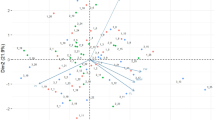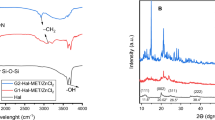Abstract
THE method most commonly used for the estimation of cacao tannin is by precipitation with cinchonine sulphate1,2,3. Duthie4 found that the filtrate from the cinchonine tannate gave a precipitate on refluxing with formaldehyde and hydrochloric acid (Stiasny reagent). He suggested that this precipitate is a measure of catechin and similar phenolic compounds.
This is a preview of subscription content, access via your institution
Access options
Subscribe to this journal
Receive 51 print issues and online access
$199.00 per year
only $3.90 per issue
Buy this article
- Purchase on SpringerLink
- Instant access to full article PDF
Prices may be subject to local taxes which are calculated during checkout
Similar content being viewed by others
References
Hooper, D., Analyst, 50, 162 (1925).
Jensen, H. R., Analyst, 53, 365 (1928).
Adam, W. B., Analyst, 53, 369 (1928).
Duthie, D. W., Analyst, 63, 27 (1938).
Official and Tentative Methods of Analysis of the Association of Official Agricultural Chemists, 5th ed., 199 (1940).
Smith, H. L., Analyst, 38, 312 (1913).
Chapman, A. C., Analyst, 38, 315 (1913).
Author information
Authors and Affiliations
Rights and permissions
About this article
Cite this article
HUMPHRIES, E. Cacao Tannin. Nature 152, 569 (1943). https://doi.org/10.1038/152569a0
Issue date:
DOI: https://doi.org/10.1038/152569a0



